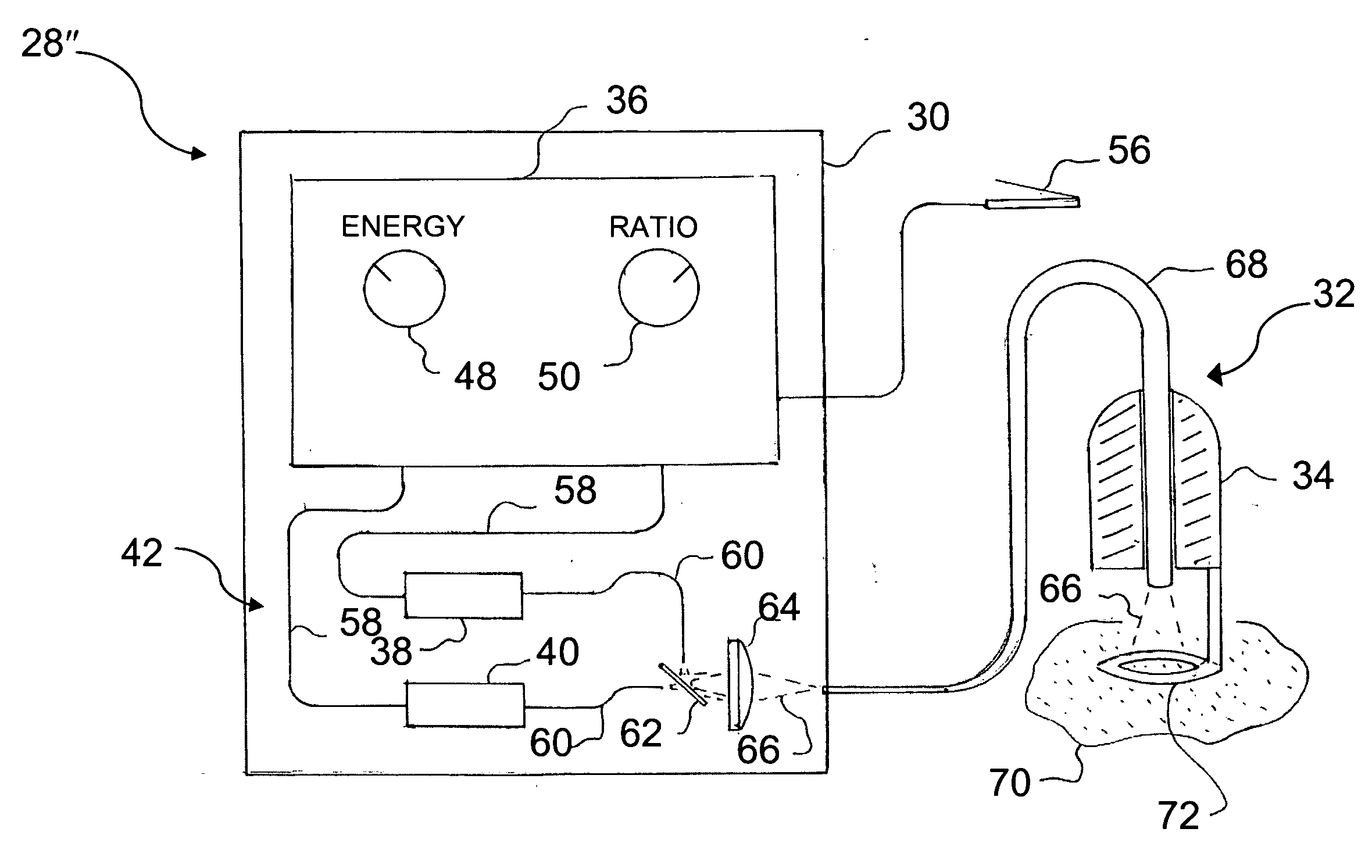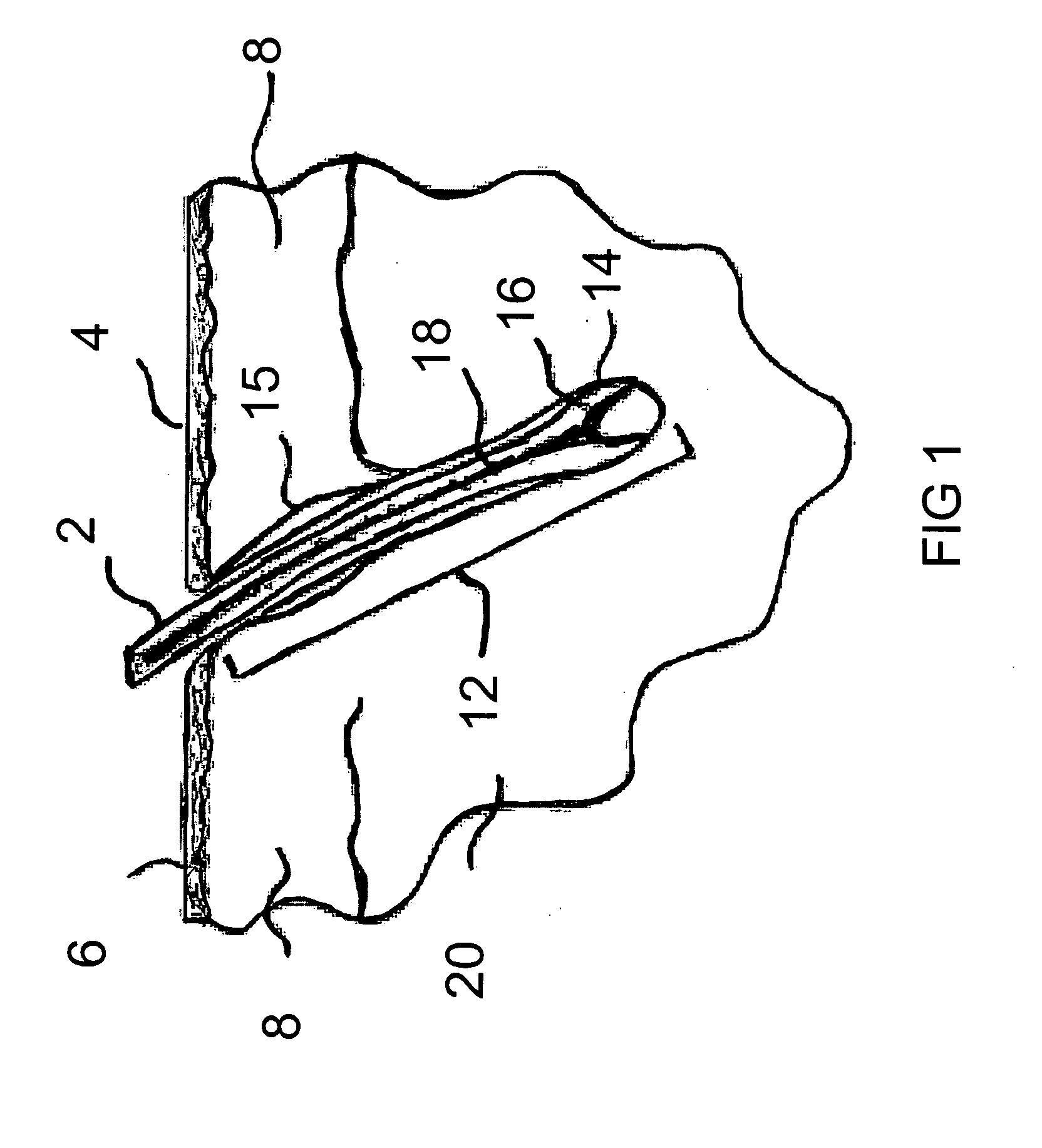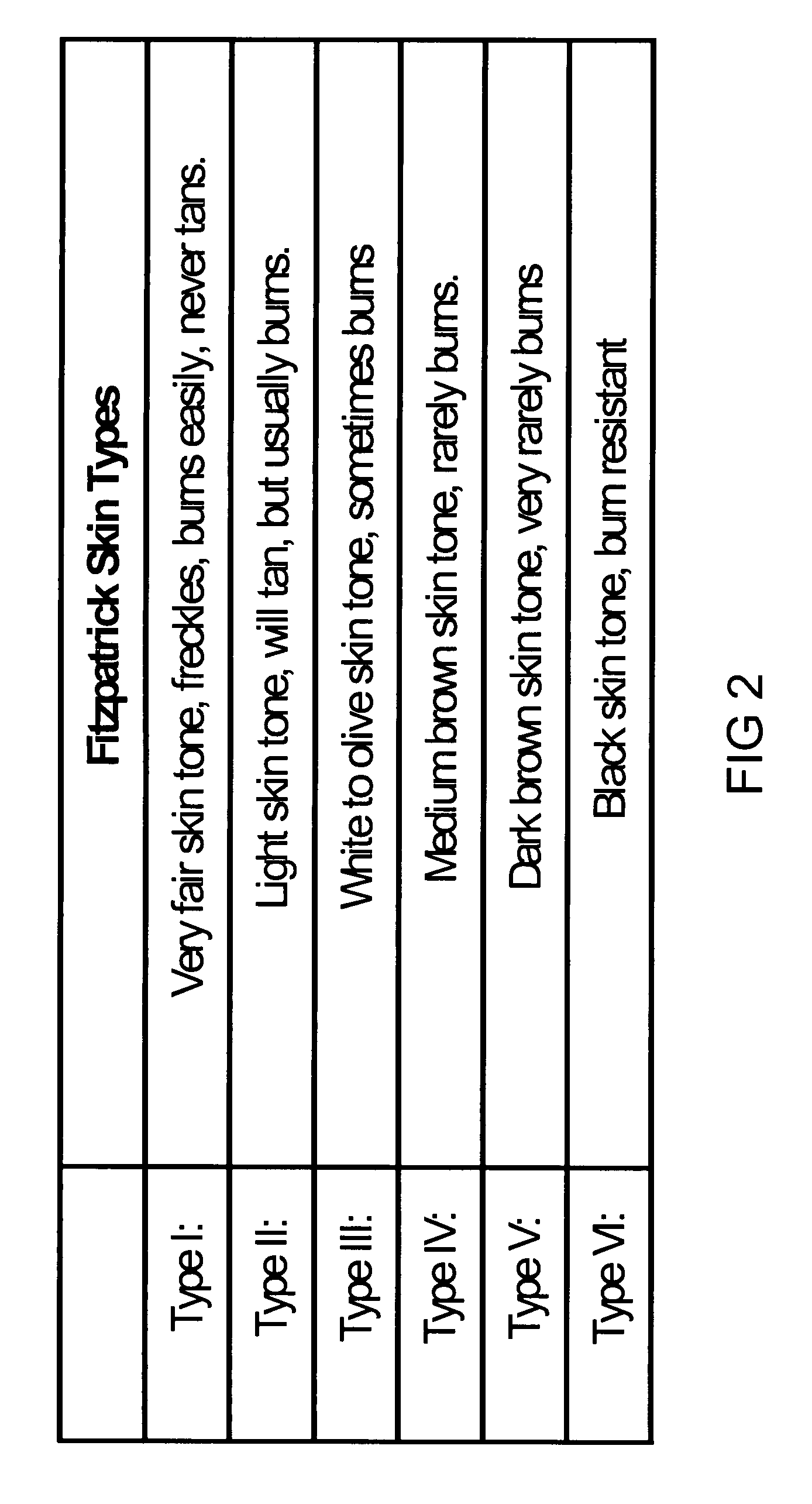Light beam wavelength mixing for hair removal
a light beam and hair technology, applied in the field of hair removal, can solve the problems of hair follicle damage, ineffective overall treatment, and inability to successfully repair the hair follicle, and achieve the effects of safe and effective methods and apparatus for hair removal, safe treatment, and constant heating of the epidermis
- Summary
- Abstract
- Description
- Claims
- Application Information
AI Technical Summary
Benefits of technology
Problems solved by technology
Method used
Image
Examples
Embodiment Construction
[0038]Wavelengths of the electromagnetic spectrum in the range from about 525 nm to about 1,200 nm can be used for hair removal. Wavelengths from about 750 nm to about 1,064 nm can be particularly effective because the level of optical absorption by melanin pigment is optimum. At shorter wavelengths, most of the light is absorbed in the epidermis leading to over heating of the epidermis and / or insufficient light reaching the bulb and / or bulge of the follicle. At longer wavelengths, not enough light is absorbed by the melanin pigment to be effective at safe dosage levels.
[0039]During hair removal, it is advantageous to deposit as much energy deep into the hair bulb and / or bulge while sparing the epidermis and inducing minimal damage to the surrounding dermis. Blending wavelengths can be more effective because more energy can be deposited at the bulb and / or the bulge. A blended laser system using a Nd:YAG source and an alexandrite source can be safer because less alexandrite laser lig...
PUM
 Login to View More
Login to View More Abstract
Description
Claims
Application Information
 Login to View More
Login to View More - R&D
- Intellectual Property
- Life Sciences
- Materials
- Tech Scout
- Unparalleled Data Quality
- Higher Quality Content
- 60% Fewer Hallucinations
Browse by: Latest US Patents, China's latest patents, Technical Efficacy Thesaurus, Application Domain, Technology Topic, Popular Technical Reports.
© 2025 PatSnap. All rights reserved.Legal|Privacy policy|Modern Slavery Act Transparency Statement|Sitemap|About US| Contact US: help@patsnap.com



